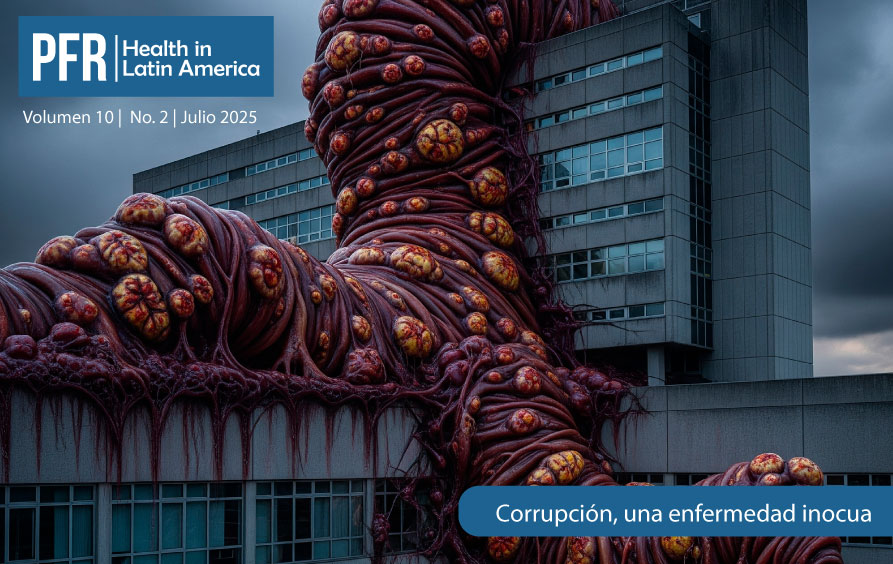The Triple Outbreak in Ecuador: Between Syndemic and Infodemic
DOI:
https://doi.org/10.16921/pfr.v10i2.379Keywords:
syndemic, infodemic, disease outbreaks, health inequity, primary healthcareAbstract
Simultaneous outbreaks of pertussis, yellow fever, and leptospirosis in rural and Amazonian areas of Ecuador exposed a critical interplay of structural and health-related factors. Low vaccination coverage, lack of basic services, poverty, child malnutrition, and weak epidemiological surveillance contributed to increased disease burden. These events, intensified by an infodemic characterized by misinformation and public alarm, formed a syndemic with disproportionate effects on vulnerable populations. In response, integrated actions are urgently needed to strengthen primary healthcare, deliver context-sensitive health communication, and ensure access to essential living conditions as fundamental components of public health preparedness.
Downloads
References
2. Ministerio de Salud del Ecuador. Gaceta epidemiológica enfermedades zoonóticas. Quito; 2025. Available: https://www.salud.gob.ec/wp-content/uploads/2025/06/Eventos_Zoo_DNVE-SE-01-23_2025.pdf
3. Ministerio de Salud del Ecuador. Gaceta epidemiológica fiebre amarilla 2025. MSP. Quito; 2025. Available: https://www.salud.gob.ec/wp-content/uploads/2025/06/Eventos-FA-DNVE-SE-24.pdf
4. Pierre JM. Mistrust and misinformation: A two-component, socio-epistemic model of belief in conspiracy theories. J Soc Polit Psychol. 2020;8: 617–641. doi:10.5964/jspp.v8i2.1362
5. HUANG X, LAMBERT S, LAU C, SOARES MAGALHAES RJ, MARQUESS J, RAJMOKAN M, et al. Assessing the social and environmental determinants of pertussis epidemics in Queensland, Australia: a Bayesian spatio-temporal analysis. Epidemiol Infect. 2017;145: 1221–1230. doi:10.1017/S0950268816003289
6. de Thoisy B, Silva NIO, Sacchetto L, de Souza Trindade G, Drumond BP. Spatial epidemiology of yellow fever: Identification of determinants of the 2016-2018 epidemics and at-risk areas in Brazil. PLoS Negl Trop Dis. 2020;14: e0008691. doi:10.1371/journal.pntd.0008691
7. Khalil H, Santana R, de Oliveira D, Palma F, Lustosa R, Eyre MT, et al. Poverty, sanitation, and Leptospira transmission pathways in residents from four Brazilian slums. PLoS Negl Trop Dis. 2021;15: e0009256. doi:10.1371/journal.pntd.0009256
8. Poeta M, Moracas C, Albano C, Petrarca L, Maglione M, Pierri L, et al. Pertussis outbreak in neonates and young infants across Italy, January to May 2024: implications for vaccination strategies. Eurosurveillance. 2024;29. doi:10.2807/1560-7917.ES.2024.29.23.2400301
9. Şık G. The clinical characteristics and prognosis of pertussis among unvaccinated infants in pediatric intensive care unit. Türk Pediatr Arşivi. 2020. doi:10.14744/TurkPediatriArs.2020.82435
10. Rajapakse S. Leptospirosis: clinical aspects. Clin Med (Northfield Il). 2022;22: 14–17. doi:10.7861/clinmed.2021-0784
11. Simon L V., Hashmi MF, Torp KD. Yellow Fever. 2025.
12. Organización Mundial de la Salud (OMS). Vacunas contra la fiebre amarilla. [cited 16 Jun 2025]. Available: https://www.who.int/teams/immunization-vaccines-and-biologicals/diseases/yellow-fever
13. Sundelson AE, Jamison AM, Huhn N, Pasquino S-L, Sell TK. Fighting the infodemic: the 4 i Framework for Advancing Communication and Trust. BMC Public Health. 2023;23: 1662. doi:10.1186/s12889-023-16612-9
14. Broniatowski DA, Jamison AM, Qi S, AlKulaib L, Chen T, Benton A, et al. Weaponized Health Communication: Twitter Bots and Russian Trolls Amplify the Vaccine Debate. Am J Public Health. 2018;108: 1378–1384. doi:10.2105/AJPH.2018.304567
15. Organización Panamericana de la Salud (OPS). Comunicación de riesgos y brotes. [cited 16 Jun 2025]. Available: https://www.paho.org/es/temas/comunicacion-riesgos-brotes






